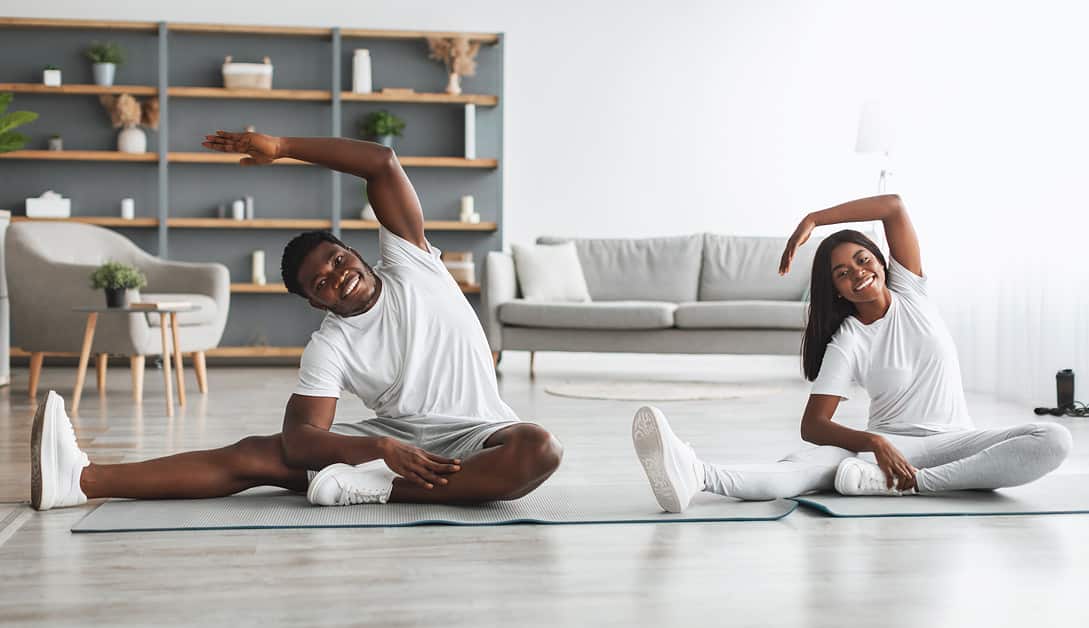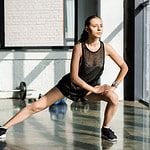Introduction
Soccer can be intense. Cool down your knees after the match! Stretches are a key part of the warm down, but many players forget this. To keep your knees in good shape, try these stretches. They target areas around the joints. Taking a few minutes to do them post-game will help with flexibility and motion. This means you’ll perform better on the pitch!
Pre-Stretching Routine
Stretching before soccer is a must. It increases your movement range, avoids injuries and boosts flexibility. After a match, stretching is just as vital. It keeps muscles relaxed and helps cool down your knees.
Having a stretching routine beforehand warms up your muscles, ligaments and tendons, preparing you for a demanding game. Let’s check out which stretches best cool down your knees post-game:
Warm-up
Before beginning any physical activity, always warm up and do dynamic stretching. Try these exercises for a pre-stretching routine:
- Jog or march in place for 5 minutes.
- Do 10 leg swings on one leg, alternating side to side, forward and back, across the body.
- Do 10 squats, focusing on glute and upper leg strength.
- Hold 3 different lunges on each leg and stretch quads and hip flexors deeply for 15 seconds each.
- Do 10 single-leg bridges per side, elevating hips off ground and contracting glutes at maximum effort before lowering.
- Add 30 seconds of hamstring stretches for each side.
- Come into deep lunge, move torso subtly from side to side and twist left to right 8 times. Hold each movement briefly before switching sides.
- Finish with 10 bodyweight squats to ensure all muscle groups are prepared. Then do soccer drills or game!
Dynamic Stretching
Dynamic stretches are controlled movements to warm up muscles. They reduce injury risk when playing soccer. Move at a steady pace, perform each exercise in a controlled way.
- Dynamic Hamstring: Feet planted hip-width apart. Hinge at hips, reach for toes. Knees soft, slightly bent. Lift back up to standing, repeat 10 times.
- Lateral Lunges: Feet hip width apart. Step out, maintain low centre of gravity. Push through heel of lead foot as you lunge. Feel tension in outer thigh/hips. Repeat 10 times, alternating sides.
- Quad Stretch: Stand on one leg, knee slightly bent. Reach behind ankle, pull toward glutes. Maintain balance on standing leg. Repeat 10 times each leg.
- Calf Raises: Stand on elevated platform (stairs). Heels off edge. Drop down, toes make contact. Feel tension in calves. Slowly rise into calf raises. 10 reps each leg.
Post-Stretching Routine
Post-soccer? Cool down! Stretching helps. Improve flexibility, reduce soreness, maintain joint mobility – it’s important! Here’s the best post-game routine for your knees:
- To recover after a match? Stretch it out!
Cool-down
Stretching post-exercise is key to reduce injury and soreness. It’s a must-have in your routine. Cooling down with stretches is perfect for prepping your body for the next match or practice. Here are some stretches for limber knees:
- Hip Flexor Stretch: Stand with one leg forward and bent at the knee. Balance with the other leg behind. Keep your back straight. Gently push forward into the front leg. Hold for 10-15 seconds. Then switch legs.
- Quad Rice Paddies: Place feet hip-width apart. Clasp hands behind back. Lift one heel towards buttocks. Flexed foot pressed against thigh. Do this to both sides 10 times each side.
- Seated Wide Leg Straddle: Sit with legs spread in front. Keep gentle arch in low back to activate core muscles. Sit tall. Roll shoulders away from ears. Take deep breaths. Feel stretch across inner thighs & calf muscles. Hold for 15-30 seconds. Slowly bring legs together to return to start position.
- Calf Stretches: Stand tall. Bend one knee slightly. Keep heel planted on ground. Reach towards opposite feet until stretch felt on calf muscles. Hold for 10-15 seconds. Switch sides. Repeat. Great way to ease stiffness out of calf muscles after running or playing soccer!
Static Stretching
Static stretching is a type of stretching that involves holding a stretched muscle for a set amount of time. It can help to lengthen the muscles and improve flexibility.
After playing soccer, it’s important to focus on static stretches for your knee muscles.
For example:
- Quadricep stretch: Stand with feet hip-width apart. Lift one foot behind you and keep knee straight. Grab onto foot and press into glutes until stretching your thigh. Hold for 2-3 seconds then switch sides.
- Hamstring stretch: Place one foot out in front. Bend towards other leg until you feel a stretch along back side of thigh. Hold for 2-3 seconds then switch sides.
- Knee circles: Sit on the floor with legs extended upwards towards the ceiling. With both hands around one knee, make slow circles (1 revolution per second). No pain or discomfort, just a strong sense of controlled effortless rotation in joints. Remain in this position for 5 rounds. Repeat on opposite leg side.
Foam Rolling
Foam rolling can be a great way to cool down after a soccer game or workout session. It helps reduce tension and break up adhesions between the muscles and fascia. It doesn’t take much time either! There are types of foam rollers to choose from, such as solid dense ones or those with ridges for intense stretching.
To start, sit on the ground with the roller in front of you. Roll back and forth across the targeted muscle group – like thighs or calves for soccer players. For a better effect, pause at tight spots or use more pressure. Always move slowly – it should never hurt, just slight discomfort. The key is to foam roll regularly post-workout for lasting results like improved mobility, injury prevention and performance!
Specific Knee Stretches
Soccer games can leave your knees feeling stiff and sore. To cool them down, do specific knee stretches. This can reduce joint pain and stop future injuries. Here are the best knee stretches to do:
Quadriceps Stretch
The quadriceps stretch targets the four muscles in the front of the thigh. These muscles, when tight, can cause pain and discomfort in the knee’s supporting structures. This stretch can be done standing or seated.
For the standing quadriceps stretch:
- Start with feet hip-width apart and back straight
- Bend one knee and bring heel up to your buttocks
- Use the opposite hand to pull heel closer
- Feel a gentle stretch and hold for 15-30 seconds
- Switch sides and repeat 3 times
For seated quadriceps stretch:
- Sit on floor with both legs out
- Bend one knee and grab the foot
- Pull it towards your buttocks until a gentle stretch is felt
- Hold for 15-30 seconds, switch legs, and repeat 3 times.
Hamstring Stretch
For the Hamstring Stretch, stand up with feet hip-width apart and facing the wall. Keep your right foot planted and bend your left knee back. Feel the stretch in your hamstring. Hold for 15 seconds then switch Legs.
For another great stretch, sit in a chair with both feet flat. Put one leg straight out in front and wrap a resistance band or towel around your toes. Move your leg back towards you until you feel a gentle pull. Hold for 15 to 30 seconds then repeat on the other side.
Twice a week, incorporate stretching into your warm-up routine before soccer. This keeps your muscles strong and your knees healthy. Then when it’s time to hit the field, your legs will be ready to go!
Calf Stretch
A calf stretch is a great exercise for the lower leg muscles. It may improve your range of motion, reduce pain and tension, and increase strength for activities like running and jumping.
- Stand close to a wall or stable object.
- Put one foot forward. Lean forward and support yourself with the wall.
- Bend the back leg’s knee slightly and keep the heel flat.
- Engage your glutes and press into the wall with your arms.
- Push through the heel until you feel a comfortable but firm sensation in the calf muscle.
- Hold for 30 to 60 seconds. Then switch legs and repeat.
- Remember to breathe slowly and focus on releasing tightness for the most benefit.
Piriformis Stretch
Perform the piriformis stretch to help with sciatica or piriformis syndrome. It stretches the muscles in the buttocks, including the piriformis muscle. When this muscle is tight, it can press on a nerve root and cause pain in the buttock or leg.
To do the exercise:
- Lie flat on a comfortable surface.
- Bend both knees and cross one ankle over the other thigh.
- Gently pull the crossed knee towards your chest with both hands.
- Hold for 10-30 seconds and repeat 3 times on each side.
- If you feel any discomfort, stop.
The aim is to increase flexibility and reduce tension in the hips and legs. Always check with a medical professional before performing any exercise that could cause pain.
Gluteal Stretch
Sit on the floor with both legs outstretched. Cross your left ankle over your right thigh above the knee. Place your hands behind you for support. Ease your left leg back until you feel the stretch along the outer side of the hip. Hold for 30 seconds. Switch sides and repeat.
The gluteal stretch is great for relieving tension and pain in the knees after a soccer game. It can help alleviate muscle tightness and promote leg circulation.
Conclusion
When it comes to cooling down after soccer, stretching helps! It reduces soreness, keeps you limber, and lessens stiffness. Stretch before, after, and even during halftime.
If you have knee pain or issues like tendinitis or bursitis, don’t wait to ask a professional for advice. Doing this can help manage your knee pain and avoid any issues.
Frequently Asked Questions
Q: What stretches should I do to cool down my knees after soccer games?
A: To cool down your knees after soccer games, you can do quad stretches, hamstring stretches, gluteal stretches, adductor stretches, and calf stretches. These stretches help to improve flexibility, reduce stiffness, and decrease pain in your knees.
Q: How often should I do these stretches?
A: It is recommended to do these stretches at least twice a day, once in the morning and once in the evening. Doing these stretches regularly can help to improve your knee flexibility and reduce pain.
Q: How long should I hold each stretch?
A: You should hold each stretch for at least 10-15 seconds. This will give your muscles enough time to relax and stretch properly.





